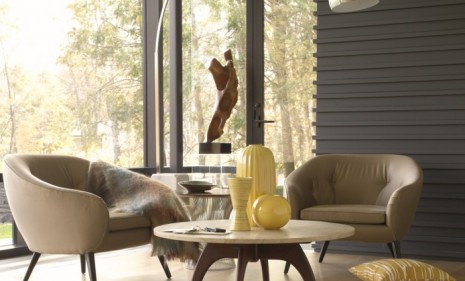The (increasingly irrelevant) living room
Why do we so rarely live in our living rooms, asks Joan DeJean in The New York Times — pointing out that the 17th Century concept of the living room as "non-grand" space has never fully taken off

It's called the living room, but in the modern house, it's typically the room least likely to be lived in, says Joan DeJean in The New York Times. Why is this case? DeJean, a professor of romance languages at the University of Pennsylvania, and the author of The Age of Comfort: When Paris Discovered Casual — and the Modern Home Began, examines the notion of the "living room," how it's changed over the last four centuries, and how the very concept may be disappearing. Here's an excerpt:
In 1691, in the first edition of what was to become a hugely influential architectural manual, “Lessons of Architecture,” Charles Augustin d’Aviler drew a distinction between formal display spaces and a new kind of room, spaces that were “less grand.” D’Aviler used an unusual phrase to describe these new rooms: “le plus habité” — literally the most lived in. This marked the first time that an architect discussed the notion of living rooms, rooms intended for everyday life....
...[But today] many living rooms are still display spaces — designed to showcase, for example, a collection of architect-designed furniture that is hardly intended for casual use. Some homes have a grand living room that gets only occasional use, while ordinary social activities take place in a smaller room with another name like family room or rec room. And in many homes, people socialize in the kitchen, while the living room, even if it’s not intended to make a design statement, gets almost no regular use.
The Week
Escape your echo chamber. Get the facts behind the news, plus analysis from multiple perspectives.

Sign up for The Week's Free Newsletters
From our morning news briefing to a weekly Good News Newsletter, get the best of The Week delivered directly to your inbox.
From our morning news briefing to a weekly Good News Newsletter, get the best of The Week delivered directly to your inbox.
Why is it that the one room whose name honors everyday life is so often a place where we do as little living as possible?
Read the entire article at The New York Times.
A free daily email with the biggest news stories of the day – and the best features from TheWeek.com
-
 Pipe bombs: The end of a conspiracy theory?
Pipe bombs: The end of a conspiracy theory?Feature Despite Bongino and Bondi’s attempt at truth-telling, the MAGAverse is still convinced the Deep State is responsible
-
 The robot revolution
The robot revolutionFeature Advances in tech and AI are producing android machine workers. What will that mean for humans?
-
 Health: Will Kennedy dismantle U.S. immunization policy?
Health: Will Kennedy dismantle U.S. immunization policy?Feature ‘America’s vaccine playbook is being rewritten by people who don’t believe in them’